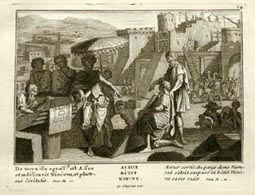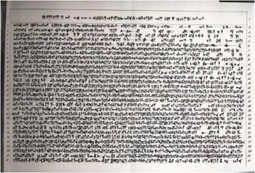Discovery of Nineveh
The city of Nineveh seems to have been abandoned by the early Islamic period. But it had become infamous in European thought. It appears in the Bible as a great but wicked city. Meanwhile classical sources portray the Assyrians as despotic and depraved. In 1173AD rabbi Benjamin of Tudela passed through the site, followed by Arab scholars Ibn Jubayr (1184AD) and Ibn Battuta (1327AD). They found ruins still known as Ninawa, preserving its ancient name. Over the centuries a series of European travellers visited Nineveh, although only briefly. In 1766 Carsten Niebuhr drew a map of the site. Claudius Rich, East India Company Resident in Baghdad, surveyed the site accurately for the first time in 1820. While there he heard of the discovery of a large stone relief depicting men and animals; he reports that it was soon broken up by locals. More reliefs were found in houses, prompting Rich to dig into the ruins. This soon stopped through fear of undermining the houses. Rich acquired several tablets from the Library. One contained an Ashurbanipal Library colophon, evidencing the dispersal of these tablets.

A print of Nineveh, as it was imagined in Europe before the excavation of the site. Private collection
Rich's widow sold his collection to the British Museum, where it formed the nucleus of the Near Eastern collection. Layard (1852) p. xi famously said that "a case scarcely three feet square inclosed all that remained, not only of the great city, Nineveh, but of Babylon itself!" This was an understatement but not by much. It was certainly the first collection to reach Europe that contained a broad range of objects rather than just seals or bricks. Rich's assistant, Karl Bellino, produced an excellent copy of a cylinder of Sennacherib found at Nebi Yunus (K 1680). This set the standard for hand drawings of inscriptions. Other tablets began to appear: another prism fragment was collected by a Polish Jesuit, Maximillian Ryllo, who had been despatched to Iraq to bring the Chaldean Christian community into the Catholic sphere of influence. He donated his collection of tablets to the Vatican Museums in 1838.

A hand drawing of a prism, BM 22502, by Karl Bellino. Copyright Trustees of the British Museum. CC BY-NC-SA 4.0 [https://www.britishmuseum.org/terms-use/copyright-and-permissions]
Further reading
- E. Frahm, "Assyria in the Hebrew Bible", in E. Frahm (ed.), A Companion to Assyria. Wiley. 2017. Pp. 556-569
- R. Rollinger, "Assyria in classical sources", in E. Frahm (ed.), A Companion to Assyria. Wiley. 2017. Pp. 570-582
- P. Matthiae, "Early Travellers in Nineveh", in L.P. Petit and D. Morandi Bonacossi (eds.), Nineveh, the Great City. Symbol of Beauty and Power. PALMA 13, Leiden: Sidestone Press, 2017: pp. 50-53
Jonathan Taylor
Jonathan Taylor, 'Discovery of Nineveh', Ashurbanipal Library Project, The Ashurbanipal Library Project, Department of the Middle East, The British Museum, Great Russell Street, London WC1B 3DG, 2022 [http://oracc.museum.upenn.edu/asbp/archaeologyofthelibrary/discoveryofnineveh/]